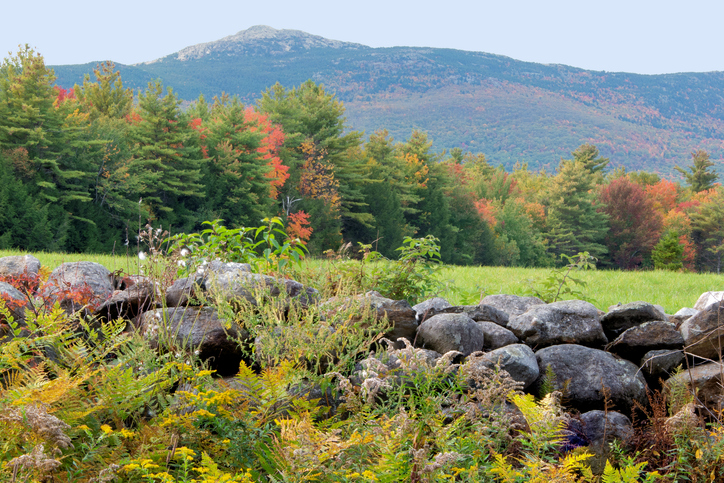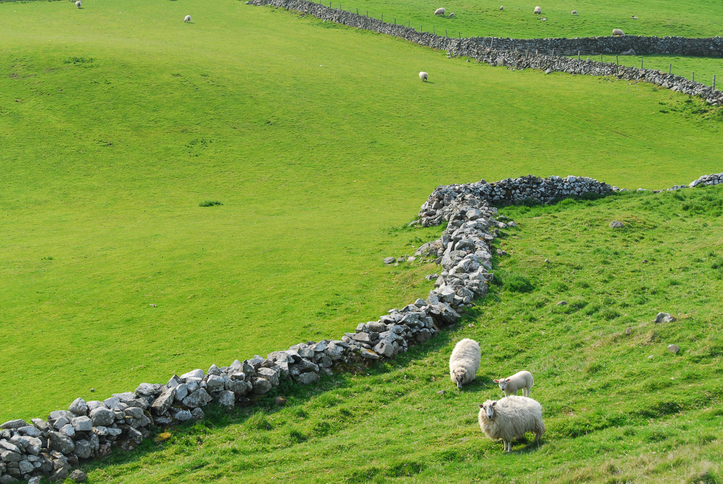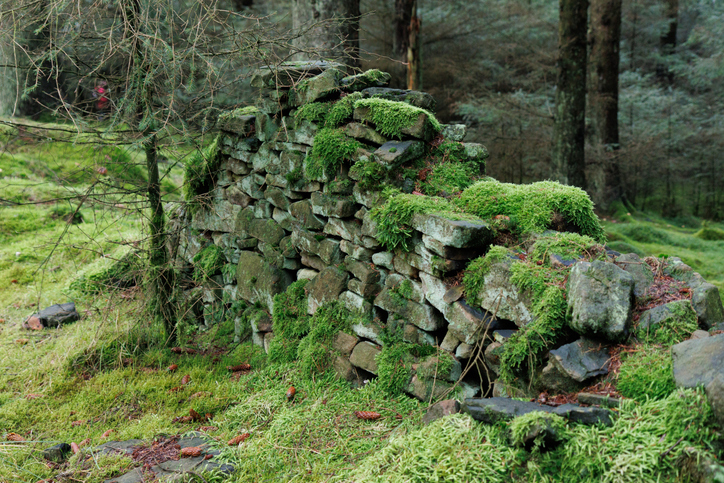New Hampshire’s Hidden Sheep Farming History: How Sheep Farming Shaped the Landscape
New Hampshire’s Hidden Sheep Farming History: How Sheep Farming Shaped the Landscape
Southern New Hampshire’s forested landscape is home to a hidden history. As you explore the Sugar River Region, you may notice the remains of stone walls winding through the countryside and forests. At times, these walls clearly mark property lines, while other times, they stand deep in the woods, seemingly out of place. These stone walls are living proof of the region’s past, serving as reminders of the mid-19th century sheep farming boom. This blog explores the history of sheep farming in the region and the environmental impacts it has had on.
The Rise of Merino Sheep Farming in New Hampshire
In the early 1800s, New England’s sheep industry quickly grew, driven by the demand for Merino wool. The Merino sheep of Spain and Portugal, known for their softer, thicker, and higher quality wool, outperformed all other breeds. Even today, Merino sheep wool remains a common choice used in many hiking and outdoor clothes. The Spanish government strictly controlled the export of Merino sheep to keep control of the market. Similarly, the Portuguese placed an embargo on the export of the breed from Portugal, successfully protecting their interests until the Napoleonic Wars began in 1808.
However, an American diplomat from Vermont, William Jarvis, managed to break this embargo. Appointed by Thomas Jefferson as the consul in Lisbon, Portugal, Jarvis became well-acquainted with the Merino breed and recognized its potential to boost New England’s economy. Seizing an opportunity amidst the chaos of Napoleon Bonaparte’s military invasion of Spain, Jarvis purchased a flock of Merino sheep and successfully smuggling them to his farm in Weathersfield, Vermont. According to ecologist Tom Wessels, by 1810, 4,000 sheep had been smuggled, forever altering New England’s economy and environment.
Fun Fact: Jarvis Hill Road in Claremont is named after William Jarvis.
New England’s rocky soil proved ideal for grazing the Merino sheep. After the War of 1812, the U.S. imposed a tariff on English goods, which sparked a 30-year period of “sheep fever”, as described by Wessels. As a result, farmers eagerly adopted Merino sheep, as the boycott on British goods positioned them to dominate the market. Merino wool, known for its softness, became preferred over the rougher English wool. By 1824, Vermont’s Merino sheep population had soared from 4,000 to 475,000, while New Hampshire reached its peak of 600,000 sheep in 1840. For the first time, New Hampshire’s agriculture made a profit, with sheep outnumbering people more than two to one.
Stone Walls and the Effect of “Sheep Fever” on New Hampshire’s Landscape
The arrival of Merino sheep and the following “sheep fever” dramatically changed the region’s landscape, ultimately leading to widespread deforestation. By the mid-19th century, 75 percent of New Hampshire had been clear-cut for grazing. As landowners cleared more forests, they began stacking the rocks they encountered into stone walls. These stone walls not only defined property lines by separating land owner’s acreage, but also controlled the livestock and cleared fields of new stones that appeared on property. Building these walls required immense physical labor, often performed by individual farmers, landowners, Native Americans, and enslaved people. As the landscape changed to support the sheep industry, stone walls became essential for managing the large flocks. Even hillsides, ridgetops, and heavily bouldered areas were converted into pastureland, all requiring fences. By the mid-1800s, an estimated 240,000 miles of these stone walls crisscrossed the landscape.
The Fall of the Mid-19th Century Sheep Farming Boom
This boom, however, was short-lived. By the mid-1840s, wool prices plummeted, and overgrazing led to soil depletion, erosion, and the abandonment of many sheep farms. The first farms to be abandoned were hill farms, which sat on thin, poor soil. Meanwhile, valley bottom farms with richer soil transitioned to market farming or dairy cattle raising. Additionally, the invention of the cotton gin combined with unpaid slave labor in the South made cotton a more economically viable alternative to Merino wool. As “sheep fever” diminished, the land gradually reverted to forests, which explains why you may come across the remnants of these stone walls in the forest today.
Historical Importance of New Hampshire’s Stone Walls
Today, these stone walls stand as defining features of the New England countryside, clearly symbolizing the region’s agricultural past. They serve not only as historical markers but also as reminders of the environmental impact of the sheep farming boom. For instance, Geologist Ron Chormann has documented how, by 1840, 75 percent of New Hampshire’s land was open—the opposite of today’s landscape. It’s challenging to imagine just how much of the landscape was cleared.
Preserving these walls and stories is important in maintaining the cultural and natural landscape of the Sugar River Region. This unique part of New England’s history reminds us of the environmental impacts humans are capable of. As you hike through the woods and encounter these ancient stone walls, take a moment to reflect on the hands that built them and the history they represent. The history of the sheep industry remains visible today. It invites us to appreciate the rich cultural heritage of the Sugar River Region.
So, the next time you are out and about in the Sugar River Region, be sure to look out for these unique and hidden stone walls. They tell a history now often unheard.
Written by Aleena Norris.
Aleena studies at Christopher Newport University pursuing a degree in Communication Studies and a certificate in Data Analytics. She has a passion for sustainable travel, visual storytelling, and diverse cultures. As an intern for Solimar International, she is helping to develop, manage, sustain, and market the Sugar River Region as a desirable destination.



